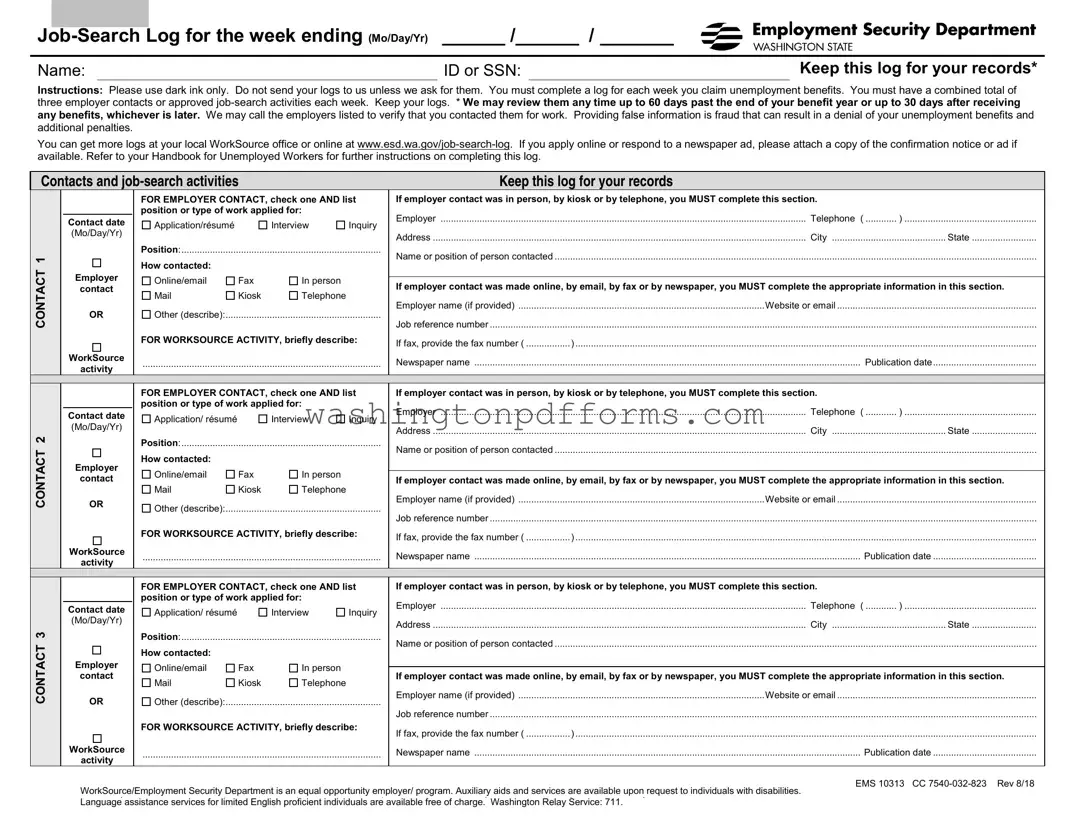When filling out the Washington State Unemployment Job form, individuals often make several common mistakes that can impact their claims. One frequent error is not using dark ink as instructed. The form specifies that dark ink should be used to ensure clarity. Using light ink can lead to difficulties in reading the information, which may delay processing.
Another mistake is failing to keep the job-search log for personal records. Although the form states that logs should not be sent unless requested, it is crucial for individuals to retain their logs. This is important in case of a review, as logs may be needed to verify employer contacts and job-search activities.
Many people overlook the requirement to document three employer contacts or approved job-search activities each week. This is a mandatory condition for claiming benefits. Not meeting this requirement can lead to a denial of benefits. Each contact must be properly recorded, including the type of work applied for and the method of contact.
Inaccurate or incomplete information about employer contacts is another common pitfall. For instance, not providing the employer's name or contact details can result in issues. Individuals should ensure they fill out all required sections thoroughly, including the contact date and the position or type of work applied for.
Some applicants mistakenly believe that they can skip the section regarding how they contacted the employer. This section is essential for verifying the nature of the contact. Whether it was in person, online, or through email, this information must be clearly indicated.
People also sometimes forget to include job reference numbers when applicable. This can create confusion during the verification process. Including these numbers helps streamline communication with potential employers and ensures that the application is processed smoothly.
Additionally, failing to attach confirmation notices or ads for online applications can be detrimental. If an applicant responds to a job posting online, they should provide proof of that application. This documentation can serve as evidence of their job search efforts.
Lastly, individuals may neglect to review their logs for accuracy before submission. Mistakes in dates, names, or contact methods can lead to complications. It is advisable to double-check all entries to ensure that the information is correct and complete.
